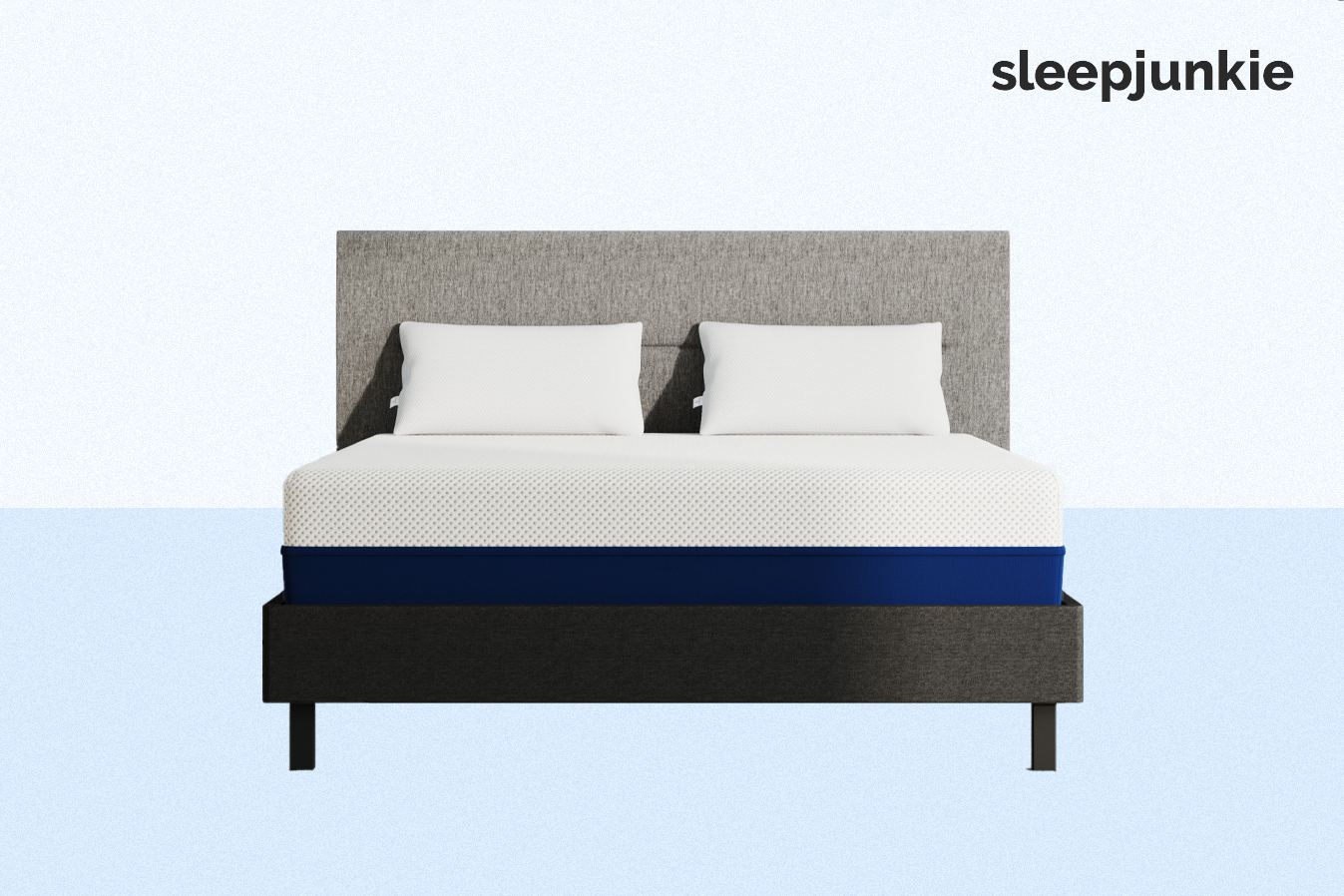Best Twin XL Size Mattress: Reviews and Buyer’s Guide

Shopping for a new twin XL size mattress doesn’t have to be a nightmare. Now, with so many online mattress-in-a-box companies and their respective risk-free sleep trials, finding a bed that’s perfect for you is simple.
We’ve curated a buying guide of some of the best twin XL mattresses on the market. We’ve scoured the Internet to bring you the best mattress types, cooling technology, and sleep trials. Because we know finding a mattress is important for your overall health, we’ve included everything from the right mattress for your body type to frequently asked questions about the shopping experience itself.
Best Twin XL Size Mattresses
| Mattress | Highlights | Price | |
|---|---|---|---|
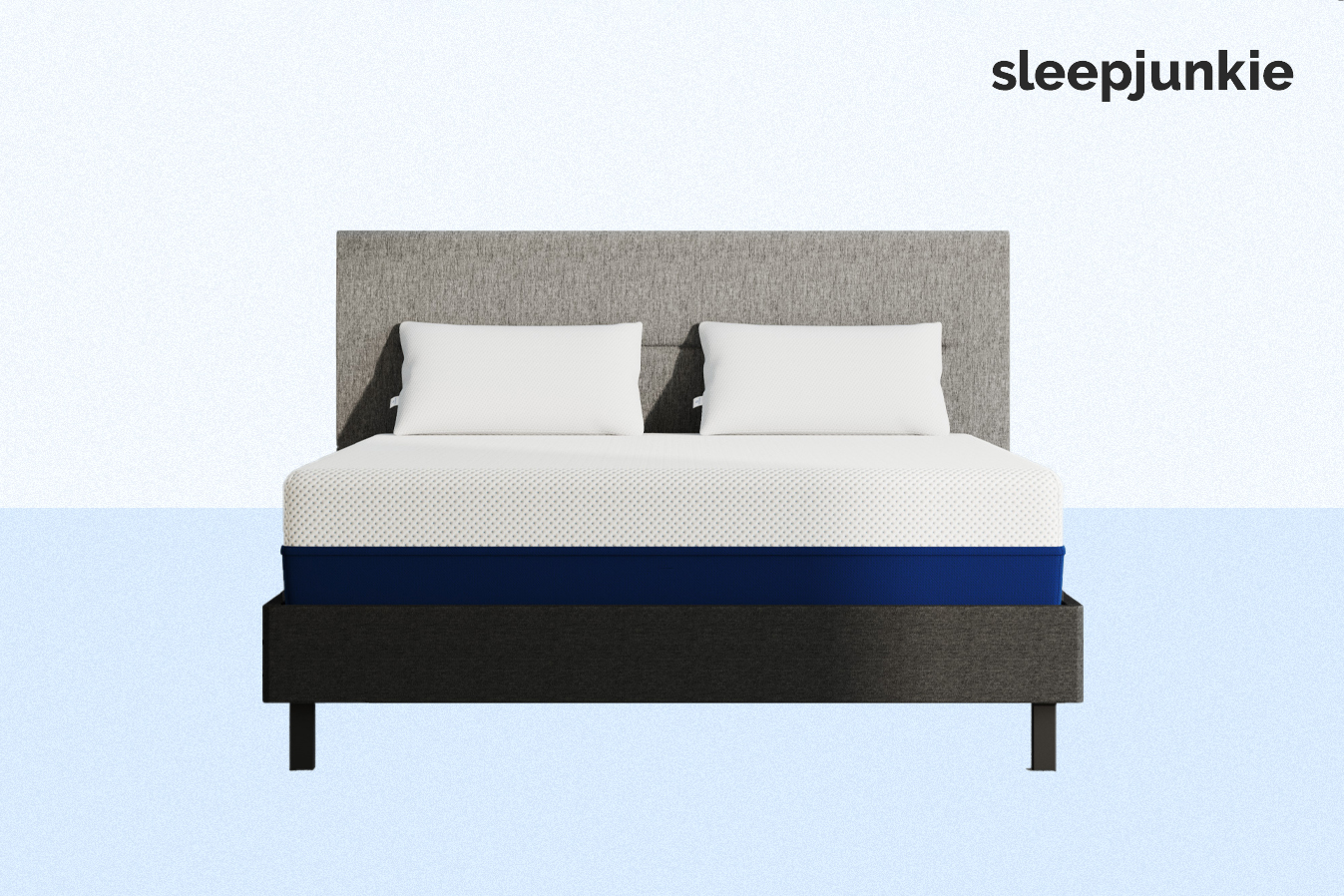 | Amerisleep AS3 | 3 inches of plant-based, pressure-relieving Bio-Pur® offers plenty of room for cushioning and comfort. | $1199Buy Now |
 | Amerisleep AS3 Hybrid | Features Bio-Pur® with bouncy pocketed coils for a unique feel. | $1199Buy Now |
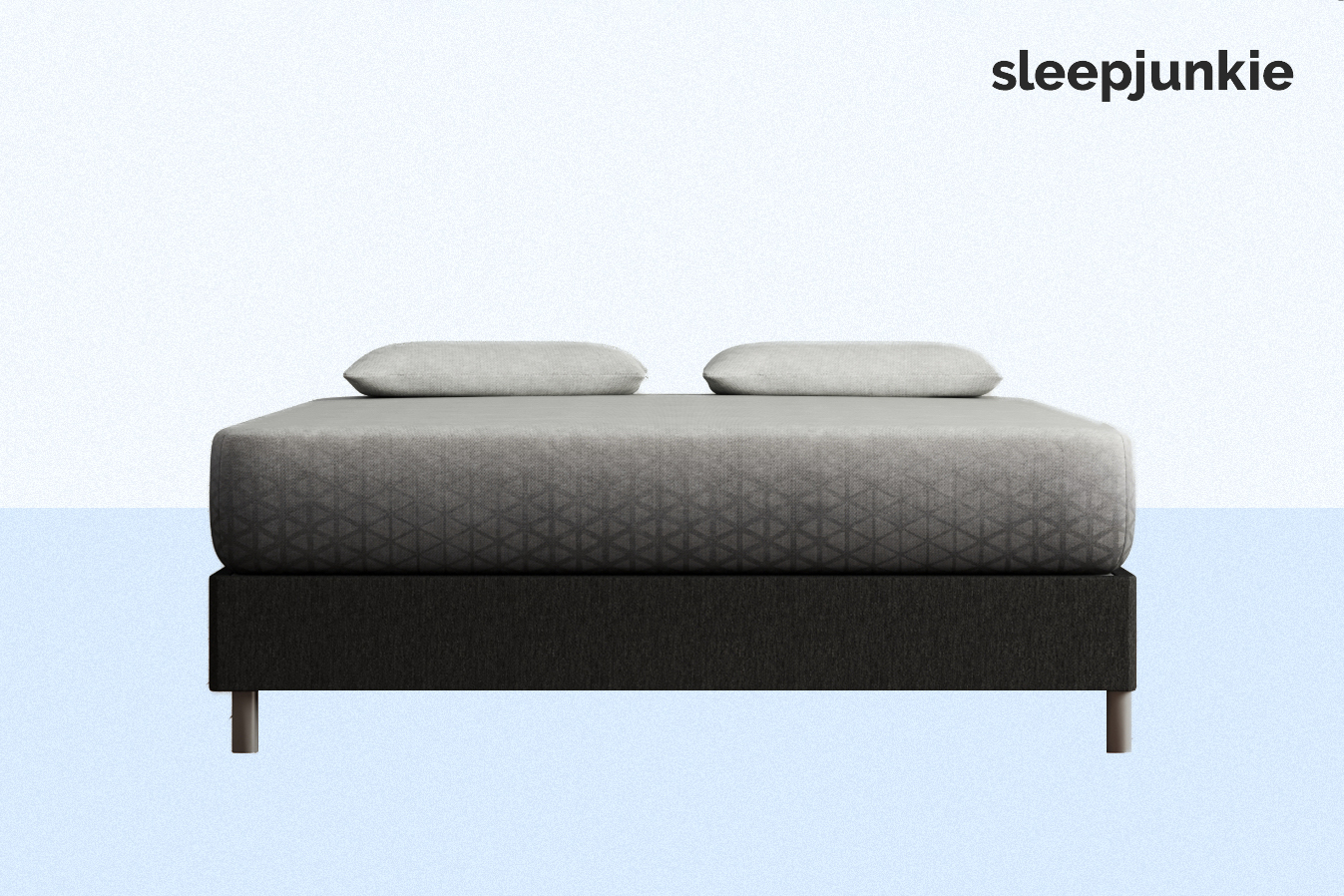 | Zoma | Combines gel-infused memory foam and Triangulex™ technology for better sleep. | $550Buy Now |
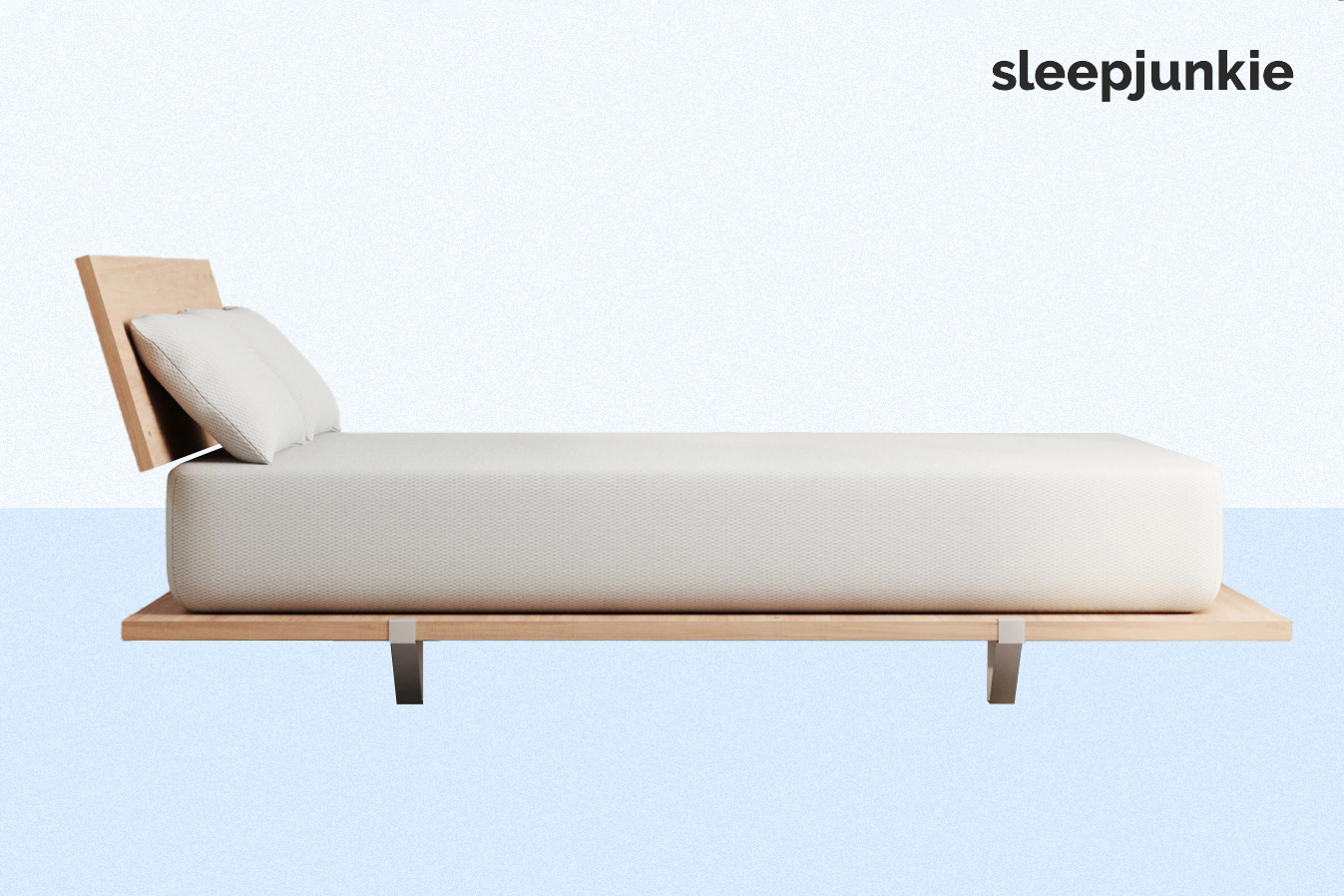 | Vaya Mattress | Budget-friendly and comfortable for the majority of body types and sleep styles. | $395Buy Now |
 | Saatva Classic | Pillow top spring mattress with two layers of coils. | $1399Buy Now |
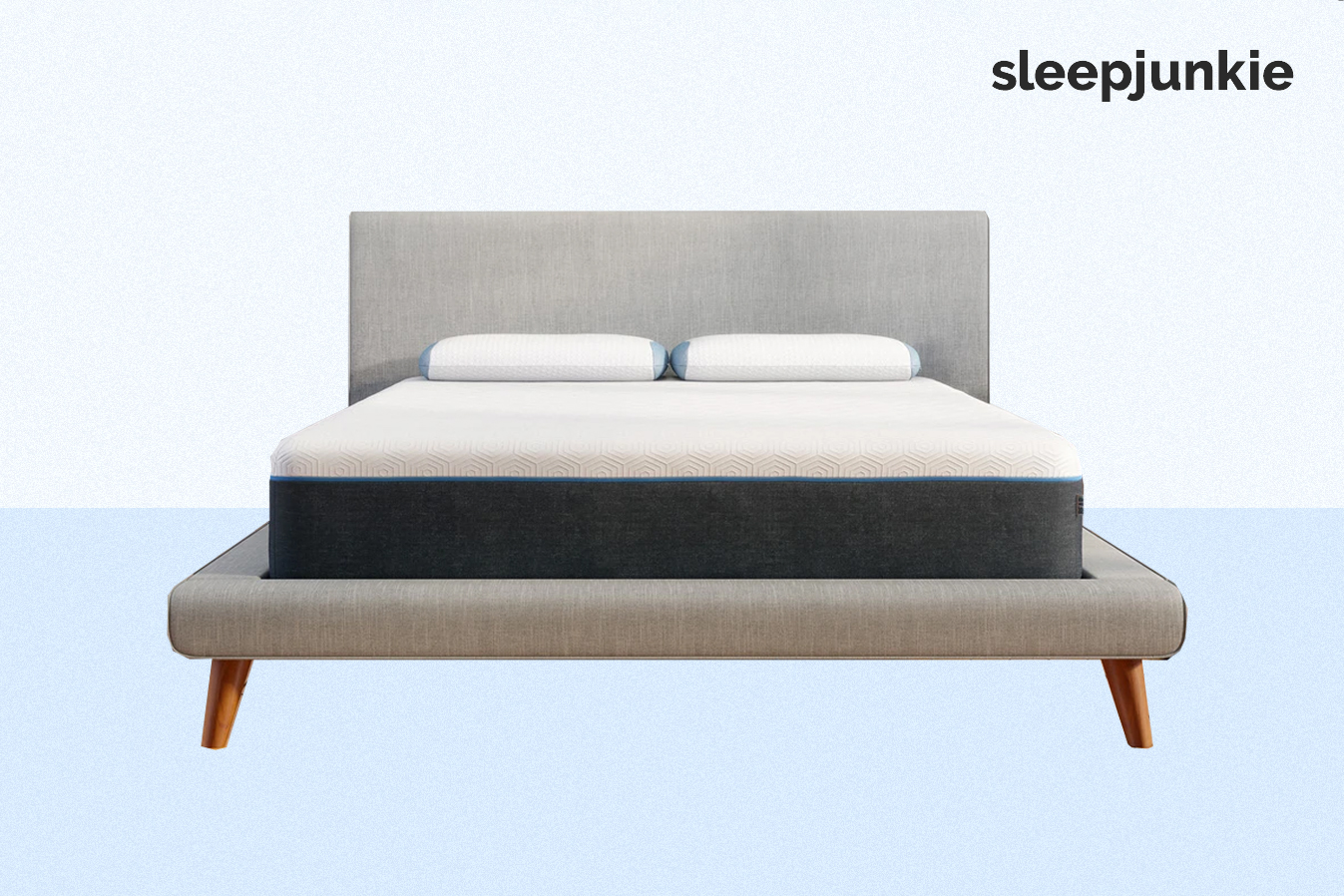 | Bear Pro | Contains gel-infused memory foam to regulate your temperature. | $990Buy Now |
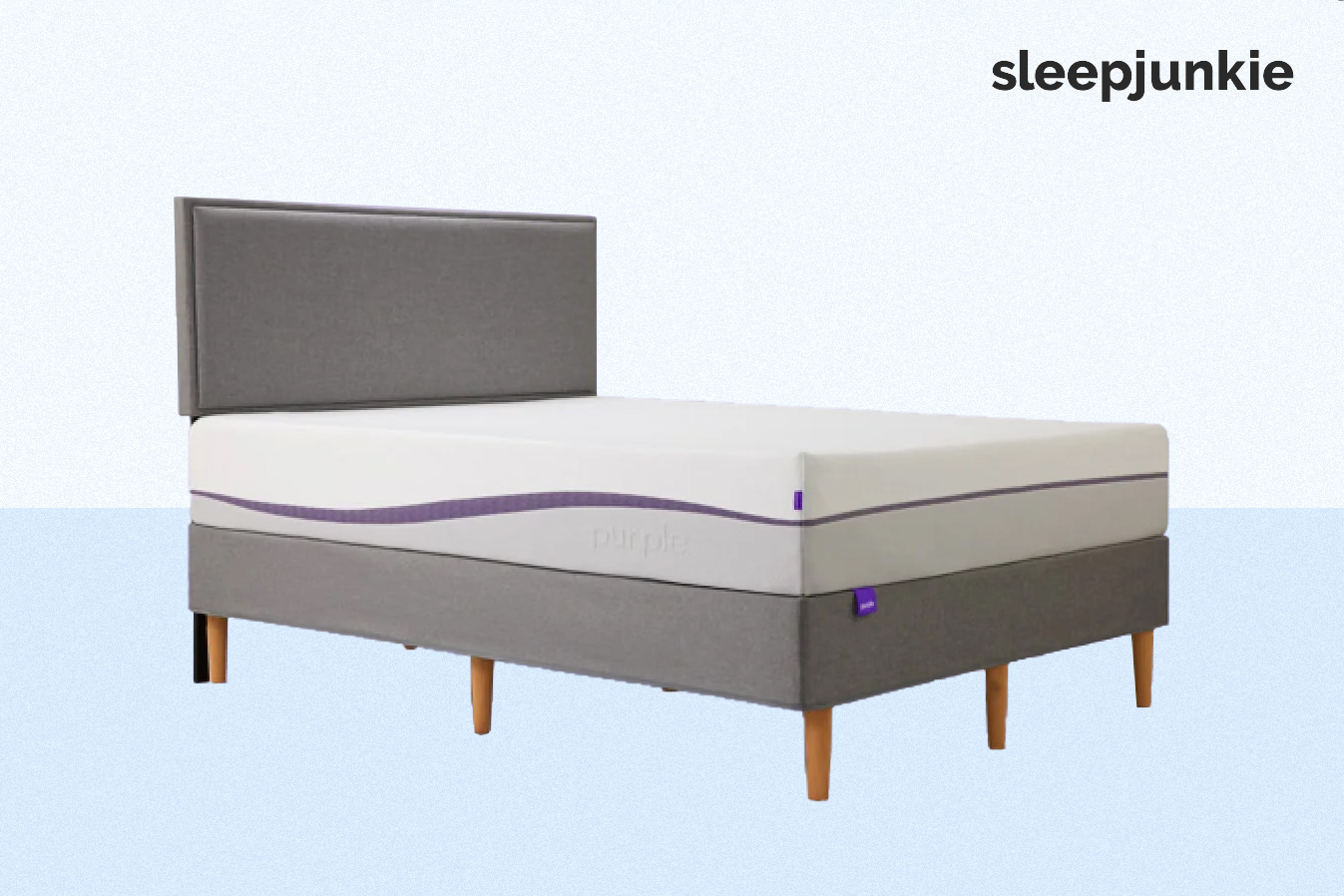 | Purple® Mattress | Features innovative Purple Grid™ for No-Pressure® support. | $749Buy Now |
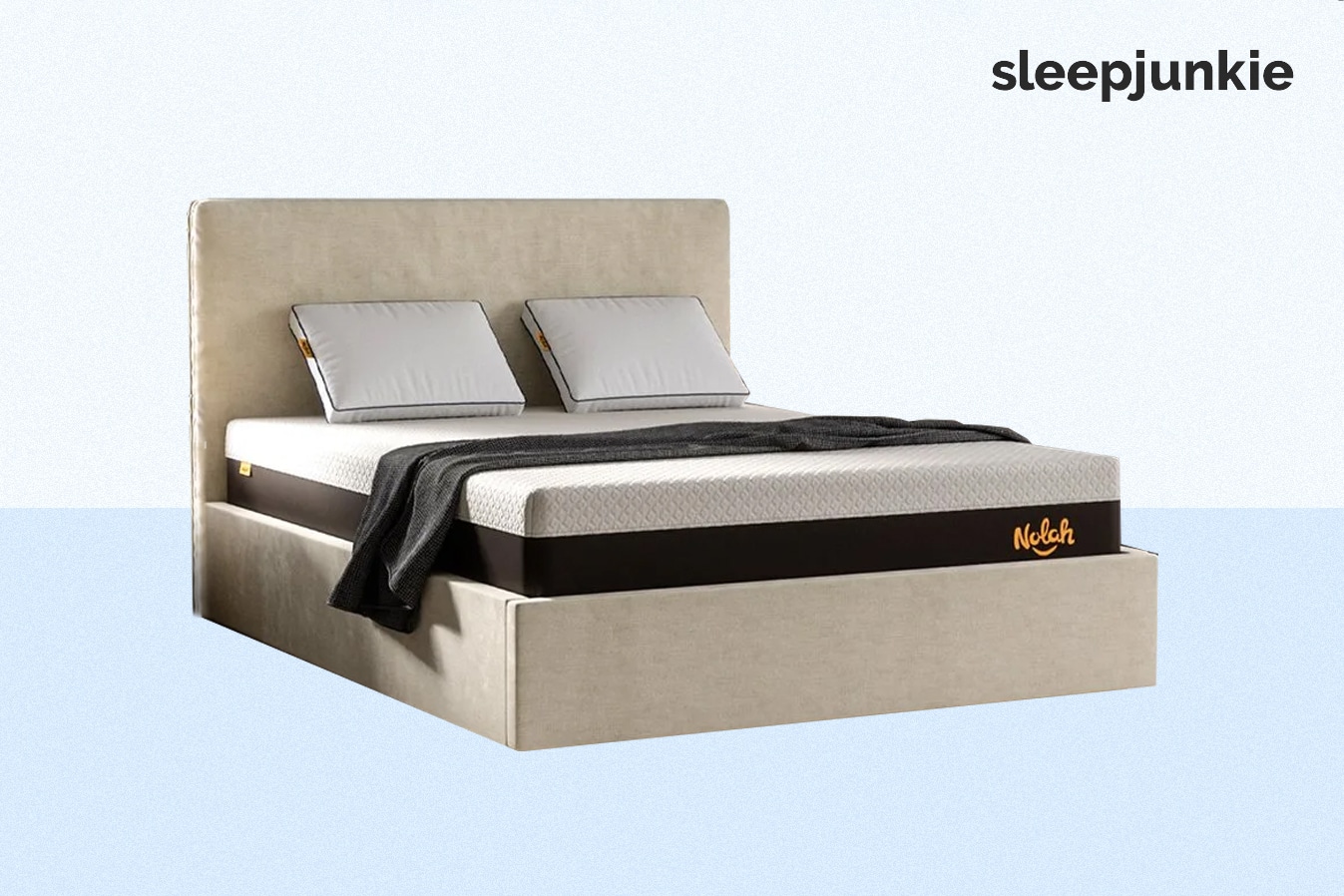 | Nolah Signature 12 | Offers flippable firmness, giving you two beds in one. | $1169Buy Now |
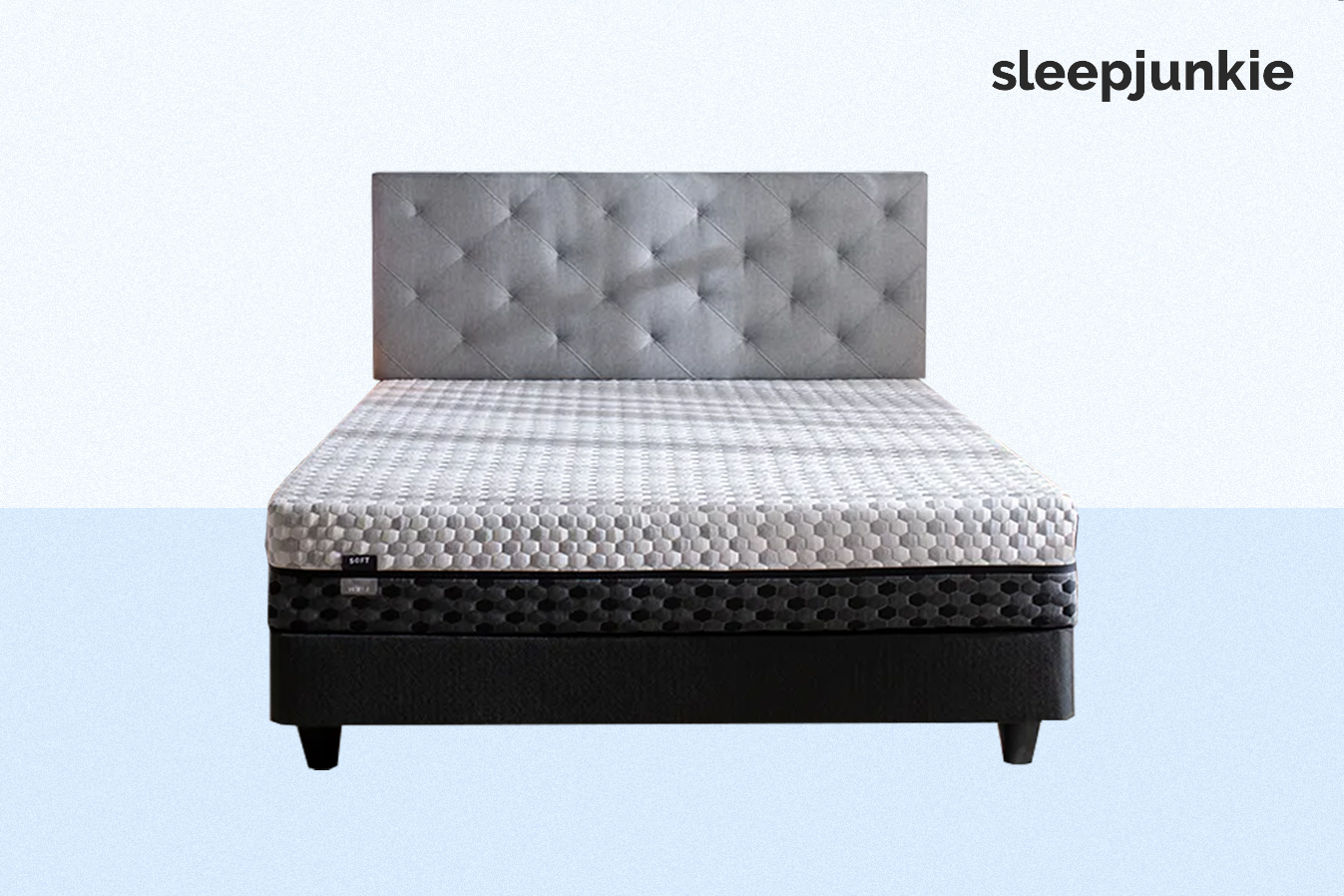 | Layla Mattress | Dual-sided design, one plush and the other firm, for different styles. | $749Buy Now |
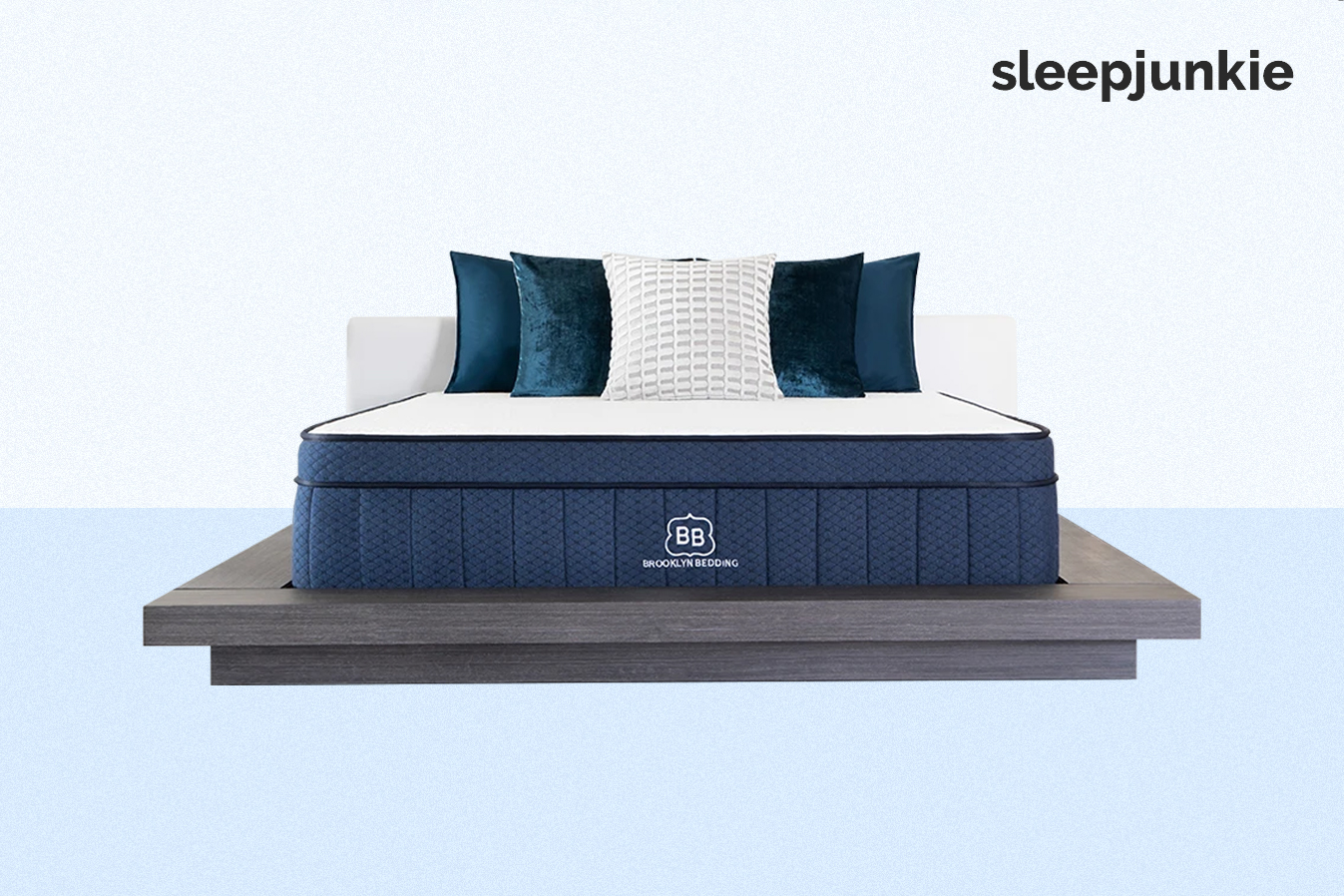 | Brooklyn Bedding Aurora Hybrid | USA-made mattress with numerous cooling features for undisturbed sleep. | $999Buy Now |
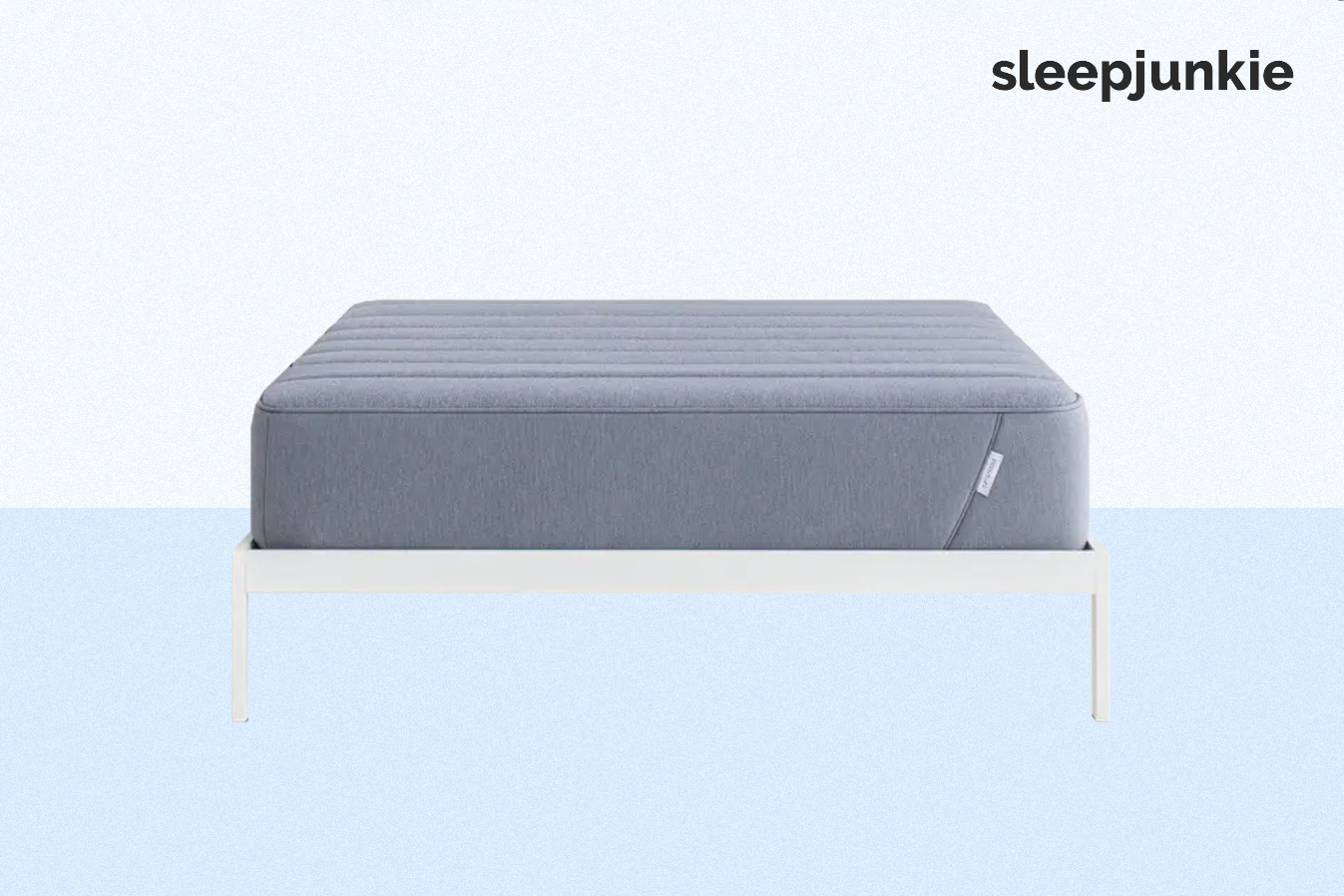 | Tuft & Needle Hybrid | Combines foam layers with pocketed coils for a bouncy, yet cushioning mattress. | $1095Buy Now |
Meet the Amerisleep AS3, the best-selling mattress from Amerisleep. One of the reasons this mattress is so popular is because it’s so versatile and accommodating for a variety of sleepers. With its medium firmness, durable support, and plush comfort, this mattress is an excellent choice for side and combo sleepers.
The Amerisleep AS3’s contains unique technology for excellent pressure relief and cooling ability. The top layer of Bio-Pur®, a plush foam, is more breathable than traditional memory foam, keeping you cool all night long. Bio-Pur® is also more responsive, springing back to its original form in 3 to 4 seconds compared to the average 20 to 30-second response rate among other memory foam brands.
The Affinity layer with HIVE® technology offers relief for chronic pain and naturally reinforces a neutral alignment of the spine. The HIVE technology gives you targeted support and comfort from hundreds of hexagon-shaped cutouts that are meticulously arranged for optimal support where you need it most, like your head, back, and feet. The same detail-oriented design optimizes pressure-relief in your shoulders and hips to give you more cushion.
The bottom layer of the AS3, the Bio-Core® layer, supports all the other layers, giving the mattress durability and longevity you can trust.
If you’re not completely satisfied with your new Amerisleep AS3, you can return it within 100 days after purchase as part of the company’s 100-night sleep trial. If you decide this mattress isn’t for you after a month, Amerisleep will issue a full refund. If you decide to keep it, you can sleep easy knowing your mattress is under warranty for 20 years.
AMERISLEEP AS3
- Breathable and responsive plant-based memory foam
- Five zones of support make the mattress feel soft and firm as needed
- Sturdy and supportive Bio-Core® foam
The Zoma Mattress is another popular memory foam mattress to consider. The Zoma is a mattress for athletes designed to help you sleep deeper, recover faster, and wake up feeling rested. Even if you’re not an athlete, you can upgrade your night’s rest with Zoma’s sleep-enhancing features.
The Zoma is a medium mattress with 3 layers. It’s most comfortable for side and back sleepers and likely too soft for stomach sleepers.
The first layer of the Zoma is 2 inches of gel memory foam. When you lay down on this bed, the memory foam cushions your body to relieve pressure and prevent pains. The gel within this top layer combats body heat and keeps you at a comfortable temperature. Zoma also includes Triangulex™ technology within this layer. Triangulex™ technology offers zoned support under your midsection, shoulders, and hips; it’s firmer under your midsection to keep your spine in neutral alignment, and it’s softer under your shoulders and hips to allow for deep compression.
Below the layer of memory foam is 2 inches of Reactiv™, a latex-like poly-foam. Reactiv™ is more responsive than traditional memory foam, so it gives the bed some bounce and prevents you from feeling “stuck” in the mattress. It also reinforces the Triangulex™ technology above to keep your spine lifted in alignment.
The third and final layer of the Zoma is 7 inches of Support+, a durable poly-foam. Support+ gives the bed shape, structural support, and prevents sagging. Plus, Zoma backs each of their mattresses with a 10-year warranty.
The Zoma comes with a 100-night sleep trial, too, giving you the chance to buy online and try in-home.
ZOMA MATTRESS
- Heat-wicking gels with conforming memory foam
- Latex-like Reactiv™ foam buoys the body
- Support+ foam promotes a sag-resistant surface
If you’re interested in a foam mattress but aren’t totally sold on an all-foam bed, consider the AS3 Hybrid—the hybrid version of Amerisleep’s best-selling AS3. The AS3 Hybrid features pressure-relieving Bio-Pur® and bouncy pocketed coils to offer a cushioning yet responsive feel.
The AS3 Hybrid is a balanced medium in firmness and recommended for side and back sleepers, which also makes it a suitable mattress for combination sleepers. It offers just enough cushioning comfort to cradle your body and distribute your weight evenly, but it’s not so soft that it causes uncomfortable sinkage or makes you feel “stuck” in the bed.
The AS3 Hybrid, like the AS3, has 3 inches of Bio-Pur® as the comfort layer. Below the comfort layer, though, is a pocketed coil system (not Affinity with HIVE® technology). These coils give the bed a lot of bounce, but they also offer targeted support like HIVE®—Amerisleep designs these coils to feel firmer beneath your torso, head, and feet and offer better compression under the shoulders and hips.
The Bio-Pur® comfort layer and zoned pocketed coil system work in tandem to maintain healthy spinal alignment and prevent aches and pains, which is why the AS3 is such a great mattress for those with back or hip pains.
To improve the AS3 Hybrid’s durability, Amerisleep includes a 1-inch base layer and foam perimeter. With these supports, the AS3 Hybrid should resist sagging and deterioration for years to come.
On top of using durable materials in the AS3 Hybrid, Amerisleep still backs this mattress with its industry-leading 20-year warranty. Of course, the AS3 Hybrid also comes with a 100-night sleep trial, as well.
AMERISLEEP AS3 HYBRID
- Buoyant medium feel excellent for most sleepers
- Pocketed coils with reinforced edge support
- Base foam layer structures the mattress for greater longevity
Next on our list is the affordable Vaya Mattress, a comfortable option for side, back, and combination sleepers alike. The Vaya Mattress is designed for universal firmness, but it may feel a bit too soft for most stomach sleepers.
We like the Vaya because it has a simple design, is CertiPUR-US® certified, and costs only $395 for a twin XL.
The Vaya Mattress is medium in firmness, containing a 3-inch comfort layer of Vaya Foam and a 9-inch base layer of sturdy poly-foam. Vaya designs their foams to be more responsive than memory foams, so you won’t sink into this mattress. Plus, Vaya foams are naturally breathable and cool, so you won’t have to worry about night sweats on this bed.
The Vaya Mattress is sold online-only and comes with a 100-night sleep trial, a 10-year warranty, free shipping (and free returns).
VAYA MATTRESS
- Vaya Comfort Foam supports a sleeper in any pose
- Base foam evenly distributes body weight
- Soft, breathable cover ensures a comfortable surface
The traditional innerspring mattress has gone through some design changes over the years, with many manufacturers incorporating elements of other mattress types into a product. Saatva produces spring mattresses with some high-end elements, such as pocketed coils and pillow tops. The Saatva Classic is one of their simpler mattresses that nonetheless packs a lot into one bed.
The top layer is a 3-inch Euro pillow top, with a cooling organic cotton cover and an antimicrobial treatment. Next is a layer of pocketed coils for responsive contouring, followed by a layer of high-density memory foam with an active wire for added back support. The bed’s base is a layer of tempered steel coils.
Saatva includes a 180-night sleep trial and a 15-year warranty with their Classic Mattress. The sleep trial isn’t 100 percent risk-free, as Saatva charges a $99 transportation fee for any returned mattress.
While the mattress is available online and is delivered to your home, Saatva doesn’t ship it rolled up and compressed into a box. Instead, they will reach out to set up a delivery appointment. As part of their free white glove delivery, Saatva will have the team set up your mattress and even remove your old bed and frame.
SAATVA CLASSIC
- Euro pillow top for a clean, well-constructed look
- Third layer bolsters back support and pressure relief
- Two layers of coils for increased comfort and support
Best Cooling Twin XL Size Mattress: Bear Pro

The Bear Pro promotes a cooler sleep environment by incorporating a few varieties of foam copper, gel and an open-cell structure to keep out unwanted body heat, helping you stay cool. Copper itself is a thermal heat conductor that helps to regulate your body heat by pulling away excess body heat.
Other benefits from the copper infused into the Bear Pro mattress include a sleep environment that is both naturally antiviral and antibacterial. Because of its layered memory foam this twin XL mattress will help cradle and contour your body’s pressure points and relieve joint pain in your hips and shoulders.
Bear Mattress also offers a 100-night risk free trial. If you’re not satisfied, they’ll refund you the price of your mattress and pick it up for you. Also included is a 10-year limited warranty for all issues outside of the normal wear and tear typical of a twin XL.
BEAR PRO
- Celliant® cover turns heat into infrared energy
- Copper infused and gel foams for cool comfort
- Mattress kept microbe-free by copper
Best Hypoallergenic Twin XL Size Mattress: Purple® Mattress

One of the most popular mattress in a boxes, Purple® mattress is a strong contender for all varieties of sleepers, as it offers both comfort and support no matter what your preferred sleep position.
The twin XL Purple® mattress features The Purple Grid™ technology which flexibly and naturally cradles various pressure points on your body like your shoulders and hips to create a zero-gravity illusion while you sleep, be it on your side, stomach or back. Yet it’s still firm enough to support and properly align the spine, especially for side sleepers.
The Purple® mattress’s hypoallergenic foam also has 2800+ open air channels that neutralize body heat so it’s comfortable for both hot and cool sleepers.
The Purple® mattress offers a 10-year warranty and a 100-night trial for you to decide if this popular mattress’s unique features are for you. If it’s not a perfect fit within those first three months, Purple® will pick up your mattress and extend a full refund, though if you’ve financed, accrued interest fees and shipping costs are non-refundable.
PURPLE® MATTRESS
- Purple Grid™ flexes under the body
- Thousands of air channels for cooler sleep
- Zero-gravity feel for a cloudlike surface
Best Luxury Twin XL Size Mattress: Nolah Signature 12

If you’re fickle about your sleeping habits, this air foam mattress might be a great option. Two layers of dense, durable foam are sandwiched between two quilted sides: a soft side and a firm side. The dual-sided mattress is a great option for the indecisive sleeper.
The center of the Nolah Signature 12 is divided into two layers. The first has a 2.5-inch Nolah AirFoam™ layer and a 1.5-inch support layer of foam, which is stronger and more resilient than average latex. Underneath is 7 inches of a breathable core foundation that reinforces the cradling, contouring features of its top layers. If you prefer the firm side over the soft— don’t worry, you get both with this twin XL mattress— you’ll be sleeping on 1 inch of the company’s signature Nolah AirFoam™.
This foam is designed to relieve joint pressure, and is great for stomach sleepers, helping to keep the spine in its proper alignment. If you prefer a plush, soft mattress top, after you flip it you can use the 2.5-inch AirFoam™ that will cradle your joints without the sagging feeling of some memory foam mattresses.
Nolah offers a 120-night sleep trial so you can have plenty of time to decide if you’re fully satisfied with the mattress. If not, the company will extend a full refund and send a driver to pick up the mattress for you. The company recommends at least 30 days to break in the mattress, allowing your body to adjust. And be sure to try the flip side of this mattress to test out all of its features.
NOLAH SIGNATURE 12
- Foam top layer engineered for greater comfort
- Bouncy transition layer on soft side
- Trial period optional but recommended
The Layla Mattress is another flippable option for sleepers to consider. Side sleepers can rest on the soft side, while back and stomach sleepers can enjoy the firm side. The Layla Mattress is a good choice if you want to try out different sleep styles or a small mattress for a guest room.
Four foam layers make up the 10-inch tall Layla Mattress. The soft side consists of 3 inches of copper-gel memory foam and 2 inches of Max Airflow Support Foam. The support core is 4 inches is sturdy foam, while the reverse firm side is an inch of copper-gel memory foam.
The copper gel memory foam providing a comfortable cushion on both sides offers more than just pressure relief. Copper is a naturally conductive material that moves heat away from the sleeper, promoting undisturbed rest. However, it does more than just increase heat dispersion, as the copper also firms up under pressure and promotes a bacteria-free mattress.
Your purchase of a Layla Mattress comes with free shipping, a 120-night sleep trial, and a lifetime warranty. A new Layla Mattress also comes with two memory foam pillows.
LAYLA MATTRESS
- Soft side perfect for side and combo sleepers
- Firm side excellent for back and stomach sleepers
- Heat-wicking copper gel
Mattresses made in the USA are constructed to comply with strict standards and are naturally faster t arrive than a mattress you have to import from overseas. Brooklyn Bedding constructs all of their mattresses within America and our top recommendation for a twin XL bed is their Aurora Hybrid.
The Brooklyn Bedding Aurora Hybrid contains five layers. First is 1.5 inches of CopperFlex™ foam, delivering the cool comfort of infused copper, followed by 2 inches of reactive TitanFlex™ foam. The responsive technology in the second layer of TitanFlex™ foam helps the mattress react to your movements.
Next is an inch of Swirl Visco-Elastic Memory Foam for deepened compression, followed by 8 inches of Ascension X® coils with pressure point relief and a 1-inch base of high-density foam. The base foam reinforces the coils’ support, keeping them standing strong after years of use.
Shoppers can choose a soft, medium, or firm Aurora Hybrid when checking out. The Brooklyn Bedding Aurora Hybrid ships free and comes with a 120-night sleep trial and a 10-year warranty.
BROOKLYN BEDDING AURORA HYBRID
- TitanCool™ infusions quickly provides coolness
- Choice of three firmnesses for comfort
- Ascension X® coils relieves pressure and minimizes transfer
Sold everywhere from their storefronts to Amazon, the twin XL Tuft & Needle Hybrid Mattress is one of the best mattress-in-a-box options on the market. This hybrid gives the feel of an innerspring mattress and the comfort of cooling memory foam.
The Tuft & Needle Hybrid Mattress combines the company’s signature T&N Adaptive® foam, which is both durable and breathable, with the support of pocket coil springs and has just the right amount of give so you can easily move on, off and around the bed.
This twin XL is engineered to give you a good night’s sleep for longer with its plush pillow-top foam infused with carbon fiber. A ceramic cooling gel helps cradle your body, providing relief to the pressure points that need it most like your hips and shoulders. The Tuft & Needle Hybrid Mattress also includes graphite and air channels that eliminate heat and moisture, keeping you cool and dry throughout the night.
You can always try this mattress out for 100 nights with the company’s 100-Night Sleep Trial. If you’re not fully satisfied, the company offers an easy return process. Tuft & Needle provides a limited 10-year warranty for defects and breakdowns outside of normal mattress wear and tear.
TUFT & NEEDLE HYBRID
- Flexible and sturdy T&N Adaptive® foam
- Cooling carbon fiber and ceramic gels
- Pocketed coils resond to movements
Mattress Size Comparisons
Wondering how different mattress sizes compare? If you’re on the fence about your new bed, check out our mattress sizes guide. Below, we discuss the differences between twin, twin XL, and full mattresses.
Twin vs Twin XL
The only difference between the twin and the twin XL is the length of the mattress. Twin XL mattresses measure 38 inches by 80 inches and offer 5 extra inches of legroom. A standard twin has dimensions of 38 inches by 75 inches.
Which is better, a twin or twin XL size mattress? If you’re buying a mattress for a little one who’s expected to grow or shopping for a space-saving mattress for your dorm or apartment, a twin XL is the best way to go.
It doesn’t take up a significant amount of room compared to the twin, but because it offers 5 extra inches of legroom, it’ll last your kid through growth spurts and be long enough to accommodate taller individuals.
Twin XL vs Full
A full mattress is 5 inches shorter but 16 inches wider than a twin XL. If you value your wiggle room and have the space to accommodate a full sized mattress, choose a full over a twin XL. However, if you’re taller or looking for a bed to fit in a smaller space, you’ll want to choose the twin XL over the full. A full size mattress measures 54 inches by 75 inches.
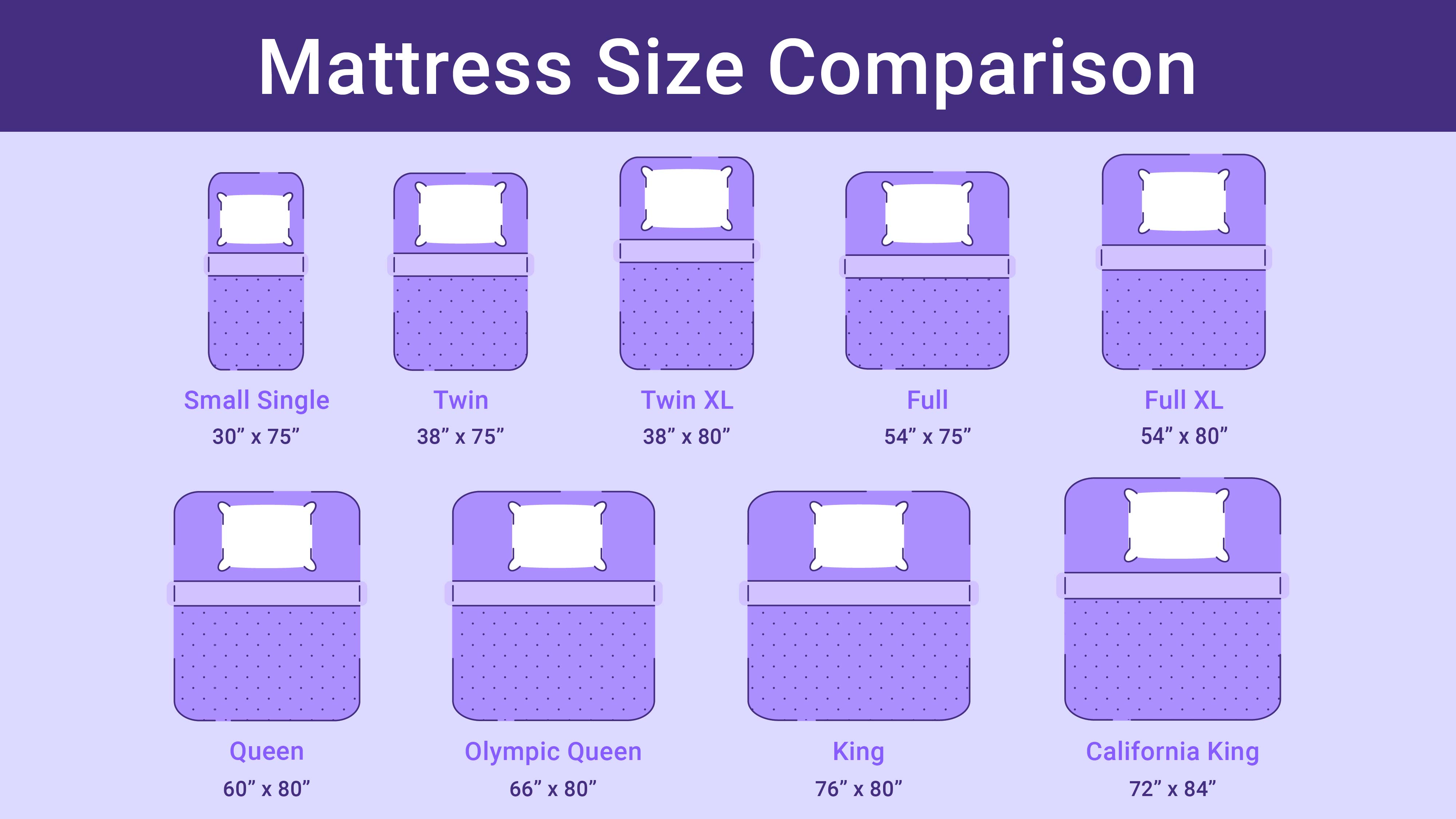
Mattress Types to Consider
Once you’ve decided on the size of your new mattress, it’s important to next determine which mattress type is right for you. There’s a lot to keep in mind. Your mattress type can affect everything from joint relief to the temperature you sleep at each night.
We’ve compiled some important information about the most popular mattress types on the market: memory foam, latex, innerspring, and hybrid.
Memory Foam Twin XL Mattresses
Known primarily for its incredible conforming ability, memory foam mattresses are also widely popular because of their motion isolation and cradling ability to relieve tired joints. Yet be warned that memory foam mattresses are more restrictive when it comes to changing your sleep position and are known to have poor airflow.
Memory foam mattresses are characterized as any mattress that has at least two layers of foam. A basic memory foam mattress has around 1.5 inches of memory foam over at least five additional inches of support foam.
Many memory foam owners report high satisfaction with their memory foam mattresses. However, selecting this mattress depends on your own personal sleep preferences.
Latex Twin XL Mattresses
Latex mattresses are available in different forms: natural, synthetic or a blend of both. Each perform similarly, though their chemical makeup differs. Natural latex is made from the sap of rubber trees. A synthetic version, though manufactured, has similar chemical properties to its organic counterpart.
Latex mattresses are a popular choice because of their dense, high-quality materials and because of their average 8-year lifespan. Part of this longevity comes from how the beds are designed. Some natural latex beds are made of interchangeable layers, allowing you to customize your desired firmness.
Unlike memory foam, latex mattresses and latex mattress toppers have higher resilience, making it easier for you to change positions or get in and out of the bed.
Innerspring Twin XL Mattresses
Two of the most defining elements to an innerspring mattress are its bounce and its poor conforming ability. If you want to feel like you’re enveloped in a soft, plush cloud, an innerspring mattress likely isn’t for you. While some models use some forms of comfort layer materials, like a pillow top or Euro top, innersprings are generally not a contouring mattress.
However, there are some benefits to the innerspring’s lack of contouring ability— notably, its airflow and surface tension, both thanks to the coils in the base. Without a memory foam top layer, which can often make getting in and out of bed cumbersome, it’s much easier to move around on an innerspring mattress.
Hybrid Twin XL Mattresses
A hybrid mattress seeks to offer you the best of two top-performing mattress types. It combines the contouring, pressure relief of a memory foam mattress with the support, bounce and motion isolation of an innerspring mattress. But be warned, these mattresses are heavy.
As with other memory foam mattresses, the memory foam comfort layer of a hybrid mattress has a tendency to trap in body heat. If you’re looking for a cooler alternative, consider a mattress that has cooling properties like gel or copper infusions.
Hybrid mattresses range anywhere from medium-firm to extra firm. They usually cost more than most other mattress types because they use a lot more materials.
If you’re looking for additional comfort, a lot of hybrid (and innerspring) mattresses offer an additional comfort layer sewn onto the top of the mattress, a pillow top or Euro top. A pillow top is a plush, pillow-like addition that gives a soft, contouring feel. Euro tops are similar, but are made of dense foam or fiberfill.
Sleeping Position
An overlooked, important element in choosing a mattress is your specific sleeping position. Are you a back sleeper? Stomach? Side? We recommend sleeping on your right side— it’s the healthiest. But the truth is only about 80% of adults favor side sleeping, so it’s important to know how to pick a mattress that will support your body in a healthy, natural way no matter how you sleep.
Side Sleepers
The key to healthy sleeping position is centered in the spine— specifically, how naturally it’s aligned while you sleep. The best mattresses for side sleepers are typically medium in firmness, offering an equal combination of both comfort and support. This can foster a natural spinal alignment while still providing relief to the shoulders and hips.
The worst mattresses for side sleepers are the outdated waterbed and the more popular innerspring mattress. Neither option provides enough support to align the spine and can result in aches and pains and poor quality of sleep.
Back Sleepers
Similar to stomach sleepers, about 10% of adults choose to sleep on their backs. And with back sleepers, firmness level is key.
With so many consumers wanting more plush comfort when they sleep, many best-selling mattresses are too soft for people who sleep exclusively on their backs. Because of its soft construction, some memory foam mattresses can cause pain from the misalignment of the spine, so be sure to choose an option that’s medium-firm to firm.
Good mattresses for back sleepers offer a moderate level of firmness. Think of firmness as a scale between 1-10, with 1 being very soft; 10 being very firm. Try finding a bed that lies somewhere in the middle while still meeting your preferred comfort needs. A good middle option will fall around a 5 to 7.
Many companies follow this same firmness barometer and will state where the mattress falls on the scale in terms of being soft, medium or firm. Most mattresses fall between 3-8 on the scale
Stomach Sleepers
While fewer than 10% of adults choose to sleep on their stomachs, those who do should be aware of some of the problems associated with this sleeping position so they can choose a mattress that will promote healthy sleep.
Stomach sleeping is the least healthy sleep position, but selecting a mattress that keeps your body in a neutral position can help alleviate aches and pains that come from sleeping this way. The best mattresses for stomach sleepers are firm or medium-firm to offers cushioned support and keep your spine aligned as naturally as possible.
Sleeping Cool
If you’re a hot sleeper, having a mattress that keeps you cool might be one of your most important priorities when it comes to selecting your mattress. Luckily for you, new mattress technology boasts a variety of options to keep you cool at night.
Gel Memory Foam Mattresses
Gel memory foam mattresses and traditional mattresses are made of the same basic material, in most cases. Where they differ is in their cooling properties. Historically, traditional memory foam mattresses have deterred potential buyers because they tend to trap heat more than other options.
For this reason, many companies infuse a cooling gel into the composition of the top layer of memory foam. This gel foam not only keeps you cooler, but it also helps with pressure relief, specifically in your stressed joints.
Airflow
A cool night’s sleep could be hard to come by. But a cooling mattress isn’t, thanks to recent strides in cooling technology. While memory foam mattresses were once infamous for trapping in heat, now so many companies provide cooling, advanced open-cell foam that helps keep your body temperature at a cool, neutral temperature.
Another option is an innerspring mattress, known for excellent airflow in its support layer made of individual coils.
Consider a Mattress Topper
The best time to buy a new mattress is when your old one starts to cause aches and pains and poor sleep. While you’re looking for a new mattress that best meets your needs, consider a mattress topper to keep you comfortable in the interim.
Mattress toppers are an additional piece to add on top of your mattress to give you an additional layer of comfort. Some options include memory foam, latex, feather and wool. Each has pros and cons, and really depends on what you’re looking for.
Memory foam toppers are some of the most popular, but can have a bad smell. They can also trap in a lot of heat, as they don’t have the same open-cell foam technology as new memory foam mattresses do.
Feather toppers are a good choice for extra softness, but need to be fluffed and adjusted often. Two more expensive, yet still effective choices for extra softness are a latex or wool topper.
Sleep Trials, Return Policies, and Warranties
If you’ve got mattress commitment issues, many mattress companies offer a special trial period for you to bring the mattress home and give it a test run, so to speak. On average, most companies offer around 100 nights, or about 3 months, but can extend to a full year in some cases.
At the end of the sleep trial, if you’re not satisfied with the bed, most companies will work with you to pick up the bed, donate or recycle it, and then issue a refund.
Should you experience discomfort from your mattress, the majority of companies recommend waiting at least 30 days before contacting the company for a refund. This policy exists because most new mattresses take a while to “break in,” so to speak, as they are designed to help you sleep with proper spinal alignment. Because of this, it could take up to 30 days for your body to adjust properly.
Warranties are a standard on most mattresses these days. On average, you’ll find a 10- to 20-year warranty on any mattress on the market, though some companies do offer a lifetime warranty. Be sure to read the fine print on the warranty, and understand how the warranty works if it’s prorated.
If a warranty is prorated, understand that for a portion of the allocated time (normally about 50%) some of the fee for any repairs to your mattress will be your responsibility.
Planning a Budget for a Twin XL Mattress
On average, plan to spend anywhere from $500-$1500 on a good twin XL mattress. But remember, more money doesn’t always equate with quality. Thorough research, testing the mattress out in a showroom where possible, and utilizing a company’s sleep-trial are all great ways to ensure you are getting the best mattress at a price that works for your budget.
FAQs
What is the difference between a standard twin and twin extra long?
Standard twin and twin XL mattresses share the same width, 3.16 feet, but a twin XL is about five inches longer, making it 80 inches instead of the standard 75 inches. The twin XL is a great option for sleepers who require additional legroom.
Do two twin XL beds make a California king?
Two twin XL mattresses create a split king size bed and are often purchased in pairs. This is not, however, the same thing as a California King, which is longer.
Can you fit twin sheets on a twin XL mattress?
Generally, twin blankets, comforters, and duvets will work on a twin XL bed, as they can each range in length from 88 to 110 inches, though longer twin XL bedding is available. A twin fitted sheet, mattress topper, mattress pad, and bed skirt will not be long enough to fit a twin XL bed.
Can you put a twin XL mattress on a twin bed frame?
Though the twin mattress and twin XL mattress can fit the same headboard, the twin XL requires more length (5 inches) for the bed frame.
With advances in bed design, most mattresses can be placed on a flat surface. If you choose to use a box spring, we recommend placing a moisture-resistant piece of plywood between the box spring and the mattress to avoid sagging.
Viable base options for a number of mattresses include slats, platform beds, adjustable bases, and even the floor. Also, if you’re planning on adding bunk beds to your bedroom furniture set, remember that bunk beds support a standard twin mattress rather than a twin XL.
Is a twin XL mattress the same as a full?
No, it is not. A full bed, sometimes known as a double bed, is 54 inches by 75 inches. That makes it 16 inches wider and 5 inches shorter than a twin XL mattress.
Pick the Twin XL Mattress That’s Best for You
Though the task of finding the right mattress can absolutely seem daunting, it doesn’t have to keep you up at night. When you break it down like we’ve shown you, it’s really a matter of identifying your specific sleep needs, and the mattress that best meets them within your budget.
Once you do find the right mattress, remember you always have the sleep-trial window to change your mind, though we’re sure one of these options could end up being the right one for you.
